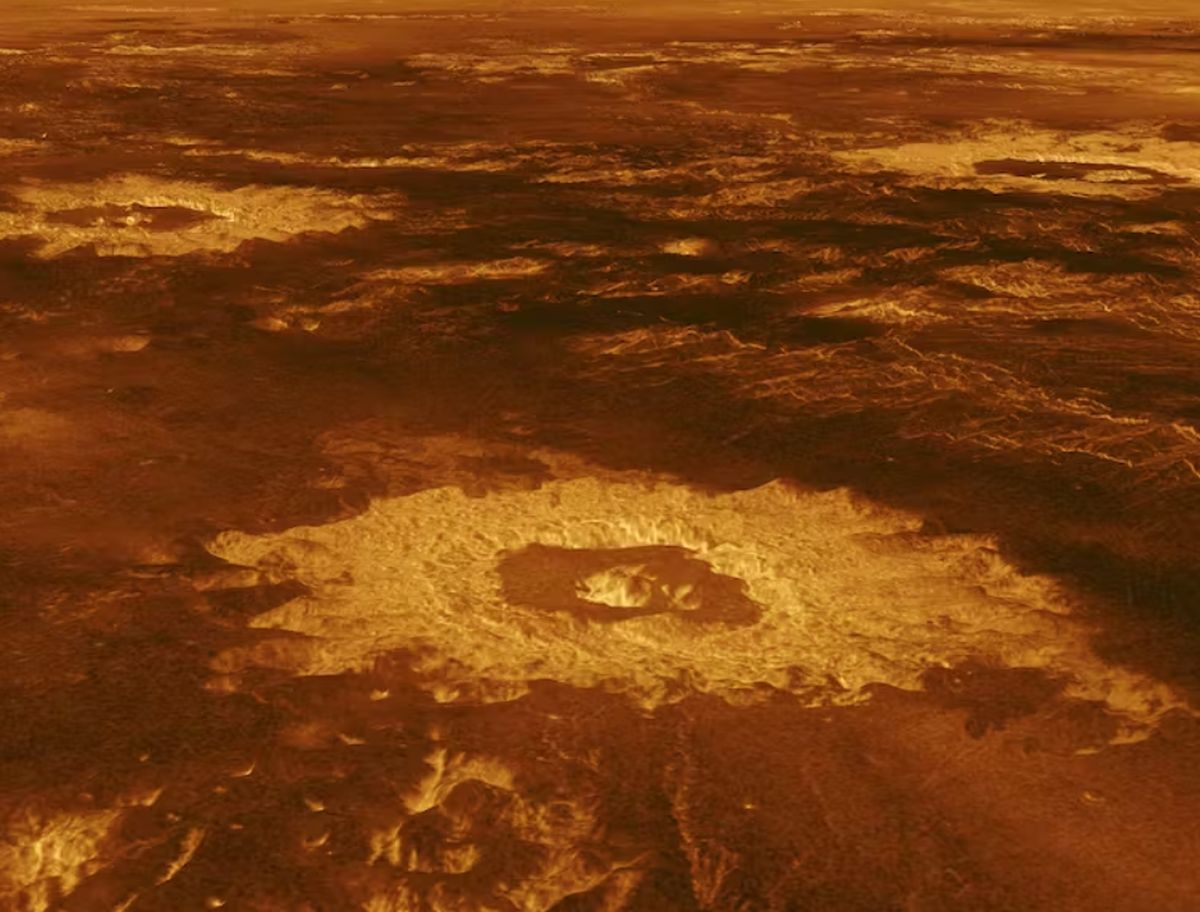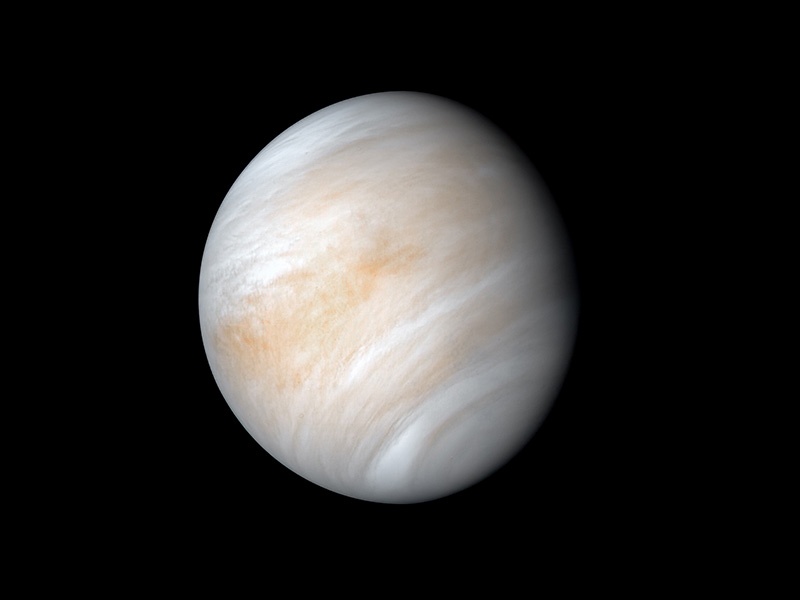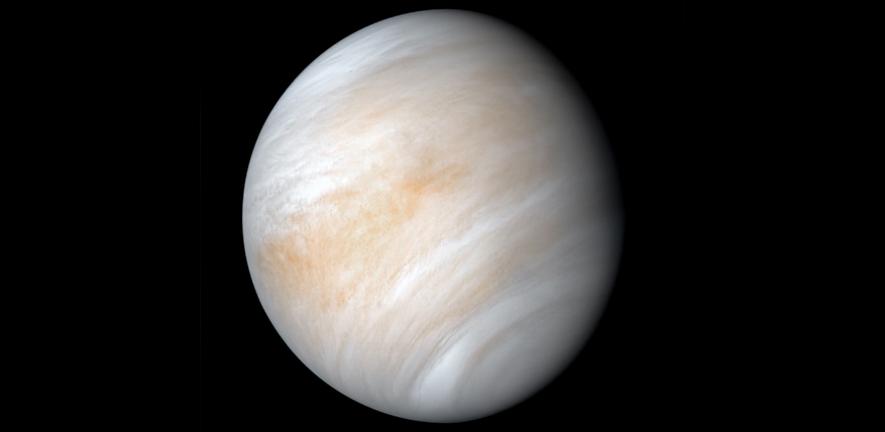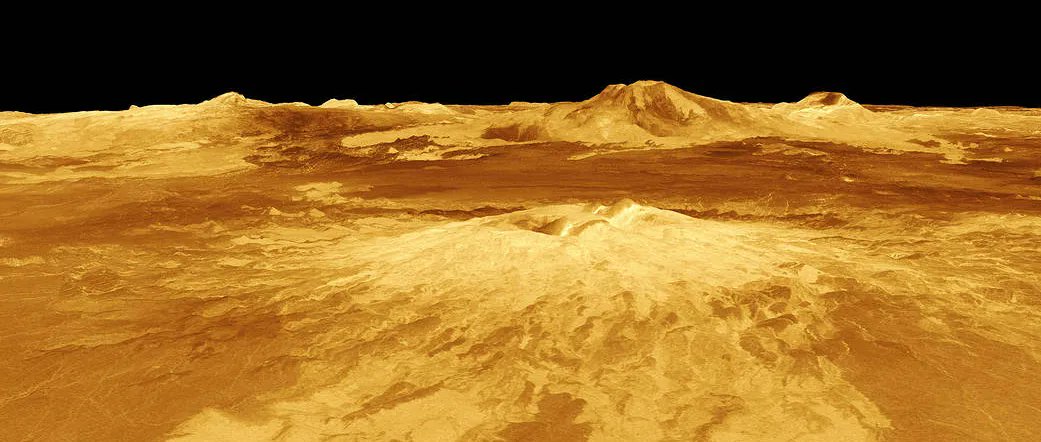When it comes to exploring our planetary neighbours, Mars tends to get a lot of the attention. For one thing its easier to explore as the environment is far less hostile than other planets but it also offers the tantalising possibility of finding evidence of primitive life, past or present! Venus however is still a fascinating world and perhaps one that gives us a glimpse into our future if we don’t do something to check global warming. A team of scientists are proposing an official Venus Exploration Program for NASA similar to the existing Mars program.
Continue reading “Venus is Important. We Should Take its Exploration Seriously.”There are Mysteries at Venus. It’s Time for an Astrobiology Mission
When scientists detected phosphine in Venus’ atmosphere in 2020, it triggered renewed, animated discussions about Venus and its potential habitability. It would be weird if the detection didn’t generate interest since phosphine is a potential biomarker. So people were understandably curious. Unfortunately, further study couldn’t confirm its presence.
But even without phosphine, Venus’ atmosphere is full of chemical intrigue that hints at biological processes. Is it time to send an astrobiology mission to our hellish sister planet?
Continue reading “There are Mysteries at Venus. It’s Time for an Astrobiology Mission”Physicist encourages continuing the search for life in Venus’ atmosphere
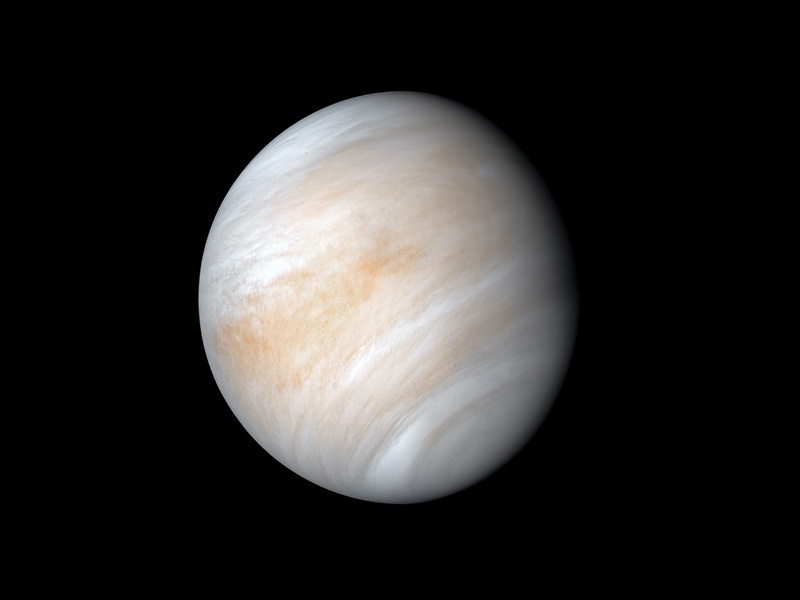
In a recent paper accepted to Contemporary Physics, a physicist from Imperial College London uses past missions and recent findings to encourage the importance of searching for life in the atmosphere of the solar system’s most inhospitable planet, Venus. This comes as a 2020 announcement claimed to have discovered the presence of phosphine in Venus’ atmosphere followed by follow-up observations from NASA’s recently-retired SOFIA aircraft in late 2022 that refuted it. Despite this, Dr. David Clements, who is a Reader in Astrophysics in the Department of Physics at Imperial College London, recently told Universe Today that “there is something odd going on in the atmosphere of Venus.”
Continue reading “Physicist encourages continuing the search for life in Venus’ atmosphere”Will Venus finally answer, ‘Are we alone?’
We recently examined how and why Saturn’s largest moon, Titan, could answer the longstanding question: Are we alone? It’s the only moon that possesses a thick atmosphere and the only planetary body other than Earth (so far) that has liquid bodies on its surface. These characteristics alone make Titan an enticing location to search for life beyond Earth. In contrast, what if life were to be found in one of the unlikeliest of places and on a planet that is known to possess some of the harshest conditions ever observed?
Continue reading “Will Venus finally answer, ‘Are we alone?’”High Altitude Life Can’t Explain the Trace Gases in Venus’ Atmosphere
The planet Venus is one of the most inexplainable and mysterious planetary objects in our solar system as its surface is beyond inhospitable for us fragile humans with temperatures at a searing 475 degrees Celsius (900 degrees Fahrenheit) and surface pressures more than 90 times that of Earth. However, its atmosphere is quite a different story as its temperature varies considerably ranging from -143 degrees Celsius (-226 degrees Fahrenheit) at night to 37 degrees Celsius (98 degrees Fahrenheit) in the daytime, and varies based on altitude, as well.
Continue reading “High Altitude Life Can’t Explain the Trace Gases in Venus’ Atmosphere”A Private Mission to Scan the Cloud Tops of Venus for Evidence of Life
The search for life on Venus has a fascinating history. Carl Sagan famously and sarcastically said there were obviously dinosaurs there since a thick haze we couldn’t see through covered the surface. More recently, evidence has pointed to a more nuanced idea of how life might exist on our sister planet. A recent announcement of phosphine in the Venusian atmosphere caused quite a stir in the research community and numerous denials from other research groups. But science moves on, and now some of the researchers involved in the phosphine finding have come up with a series of small missions that will help settle the question more thoroughly – by directly sampling Venus’ atmosphere for the first time in almost 40 years.
Continue reading “A Private Mission to Scan the Cloud Tops of Venus for Evidence of Life”The Next Generation of Exploration: Back to Venus with VERITAS
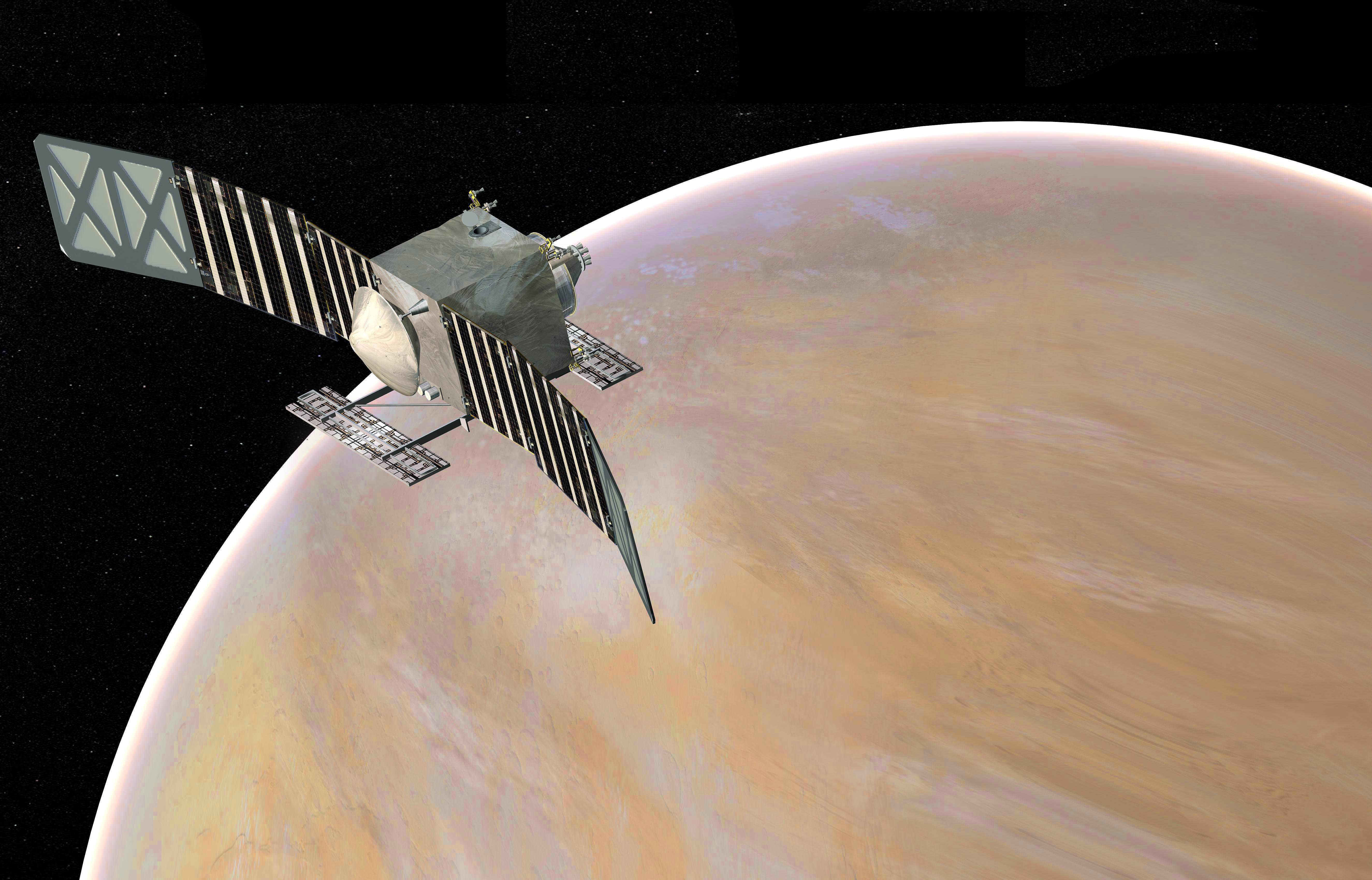
In February of 2014, NASA’s Discovery Program asked for proposals for the their 13th mission. Last week, five semifinalist were selected from the original 27 submissions for further investigation and refinement. Of the possible missions that could be going up, two involve sending a robotic spacecraft to a planet that NASA has not been to in decades: Venus!
The first is the DAVINCI spacecraft, which would study the chemical composition of Venus’ atmosphere. Meanwhile, the proposed VERITAS mission – or The Venus Emissivity, Radio Science, InSAR, Topography, and Spectroscopy spacecraft – would investigate the planet’s surface to determine just how much it has in common with Earth, and whether or not it was ever habitable.
In many respects, this mission would pick up where Magellan left off in the early 1990s. Having reached Venus in 1990, the Magellan spacecraft (otherwise known as the Venus Radar Mapper) mapped nearly the entire surface with an S-band Synthetic Aperture Radar (SAR) and microwave radiometer. From the data obtained, NASA scientists were able to make radar altimeter measurements of the planet’s topography.
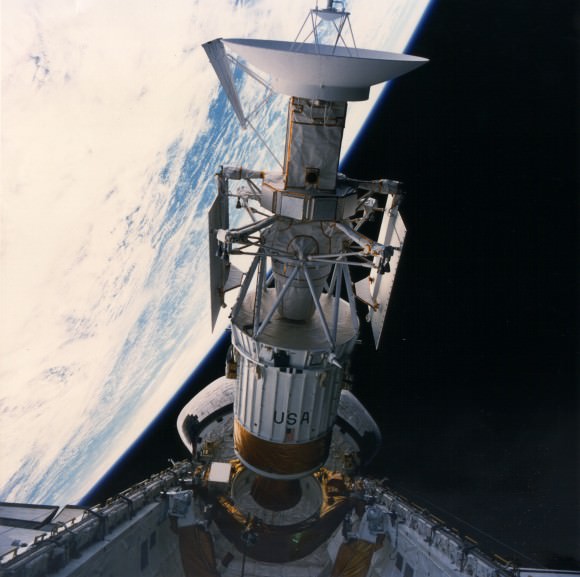
These measurements revolutionized our understanding of Venus’ geology and the geophysical processes that have shaped the planet’s surface. In addition to revealing a young surface with few impact craters, Magellan also showed evidence of volcanic activity and signs of plate tectonics.
However, the lack of finer resolution imagery and topography of the surface hampered efforts to answer definitively what role these forces have played in the formation and evolution of the surface. As a result, scientists have remained unclear as to what extent certain forces have shaped (and continue to shape) the surface of Venus.
With a suite of modern instruments, the VERITAS spacecraft would produce global, high-resolution topography and imaging of Venus’ surface and produce the first maps of deformation and global surface composition. These include an X-band radar configured as a single pass radar interferometer (known as VISAR) which would be coupled with a multispectral NIR emissivity mapping capability.
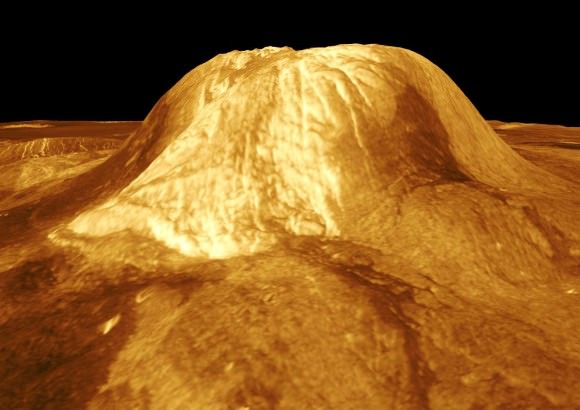
Using these, the VERITAS probe will be able to see through Venus’ thick clouds, map the surface at higher resolution than Magellan, and attempt to accomplish three major scientific goals: get a better understanding of Venus’ geologic evolution; determine what geologic processes are currently operating on Venus (including whether or not active volcanoes still exist); and find evidence for past or present water.
Suzanne Smrekar of NASA’s Jet Propulsion Laboratory (JPL) is the mission’s principal investigator, while the JPL would be responsible for managing the project. As she explained to Universe Today via email:
“VERITAS’ objectives are to reveal Venus’ geologic history, determine how active it is, and search for the fingerprints of past and present water. The overarching question is ‘How Earthlike is Venus?’ As more and more exoplanets are discovered, this information is essential to predicting whether Earth-sized planets are more likely to resemble Earth or Venus.”
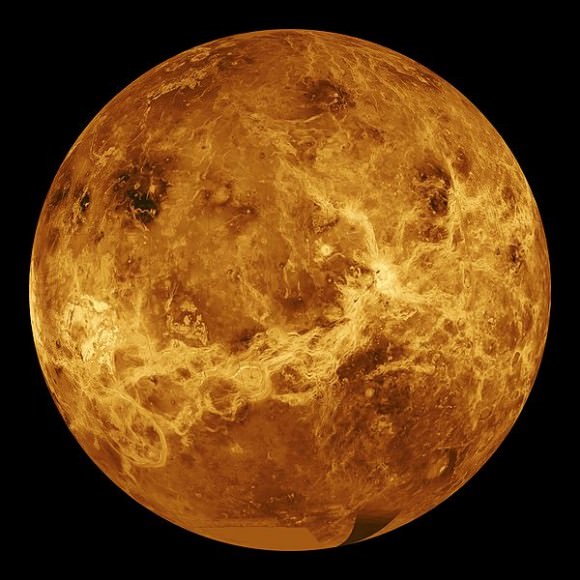
In many ways, VERITAS and DAVINCI represent a vindication for Venus scientists in the United States, who have not sent a probe to the planet since the Magellan orbiter mission ended in 1994. Since that time, efforts have been largely focused on Mars, where orbiters and landers have been looking for evidence of past and present water, and trying to piece together what Mars’ atmosphere used to look like.
But with Discovery Mission 13 and its five semi-finalists, the focus has now shifted onto Venus, near-Earth objects, and a variety of asteroids. As John Grunsfeld, astronaut and associate administrator for NASA’s Science Mission Directorate in Washington, explained:
“The selected investigations have the potential to reveal much about the formation of our solar system and its dynamic processes. Dynamic and exciting missions like these hold promise to unravel the mysteries of our solar system and inspire future generations of explorers. It’s an incredible time for science, and NASA is leading the way.”
Each investigation team will receive $3 million to conduct concept design studies and analyses. After a detailed review and evaluation of the concept studies, NASA will make the final selections by September 2016 for continued development. This final mission (or missions) that are selected will launcd by 2020 at the earliest.
The Next Generation of Exploration: The DAVINCI Spacecraft
It’s no secret that there has been a resurgence in interest in space exploration in recent years. Much of the credit for this goes to NASA’s ongoing exploration efforts on Mars, which in the past few years have revealed things like organic molecules on the surface, evidence of flowing water, and that the planet once had a denser atmosphere – all of which indicate that the planet may have once been hospitable to life.
But when it comes to the future, NASA is looking beyond Mars to consider missions that will send missions to Venus, near-Earth objects, and a variety of asteroids. With an eye to Venus, they are busy investigating the possibility of sending the Deep Atmosphere Venus Investigation of Noble gases, Chemistry, and Imaging (DAVINCI) spacecraft to the planet by the 2020s.
Led by Lori Glaze of the Goddard Spaceflight Center, the DAVINCI descent craft would essentially pick up where the American and Soviet space programs left off with the Pioneer and Venera Programs in the 1970s and 80s. The last time either country sent a probe into Venus’ atmosphere was in 1985, when the Soviet probes Vega 1 and 2 both orbited the planet and released a balloon-supported aerobot into the upper atmosphere.
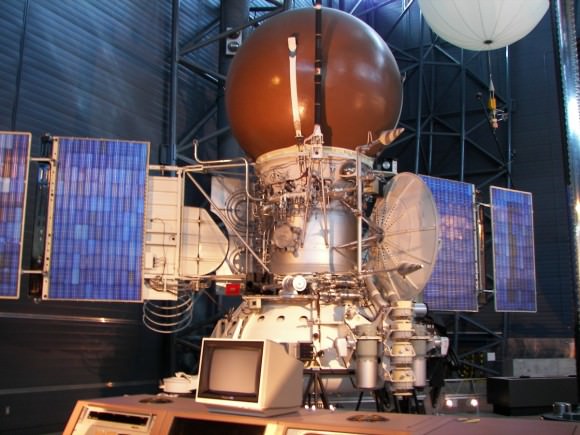
These probes both remained operational for 46 hours and discovered just how turbulent and powerful Venus’ atmosphere was. In contrast, the DAVINCI probe’s mission will be to study both the atmosphere and surface of Venus, and hopefully shed some light on some of the planet’s newfound mysteries. According to the NASA release:
“DAVINCI would study the chemical composition of Venus’ atmosphere during a 63-minute descent. It would answer scientific questions that have been considered high priorities for many years, such as whether there are volcanoes active today on the surface of Venus and how the surface interacts with the atmosphere of the planet.”
These studies will attempt to build upon the data obtained by the Venus Express spacecraft, which in 2008/2009 noted the presence of several infrared hot spots in the Ganis Chasma region near the the shield volcano of Maat Mons (shown below). Believed to be due to volcanic eruptions, this activity was thought to be responsible for significant changes that were noted in the sulfur dioxide (SO²) content in the atmosphere at the time.
What’s more, the Pioneer Venus spacecraft – which studied the planet’s atmosphere from 1978 until its orbit decayed in 1992 – noted a tenfold decreased in the density of SO² at the cloud tops, which was interpreted as a decline following an episode of volcanogenic upwelling from the lower atmosphere.

Commonly associated with volcanic activity here on Earth, SO² is a million times more abundant in Venus’ atmosphere, where it helps to power the runaway greenhouse effect that makes the planet so inhospitable. However, any SO² released into Venus’ atmosphere is also short-lived, being broken down by sunlight within a matter of days.
Hence, any significant changes in SO² levels in the upper atmosphere must have been a recent addition, and some scientists believe that the spike observed in 2008/2009 was due to a large volcano (or several) erupting. Determining whether or not this is the case, and whether or not volcanic activity plays an active role in the composition of Venus’s thick atmosphere, will be central to DAVINCI’s mission.
Along with four other mission concepts, DAVINCI was selected as a semifinalist for the NASA Discovery Program‘s latest calls for proposed missions. Every few years, the Discovery Program – a low-cost planetary missions program that is managed by the JPL’s Planetary Science Division – puts out a call for missions with an established budget of around $500 million (not counting the cost of launch or operation).
The latest call for submissions took place in February 2014, as part of the Discovery Mission 13. At the time, a total of 27 teams threw their hats into the ring to become part of the next round of space exploration missions. Last Wednesday, September 30th, 2015, five semifinalists were announced, one (or possibly two) of which will be chosen as the winner(s) by September 2016.
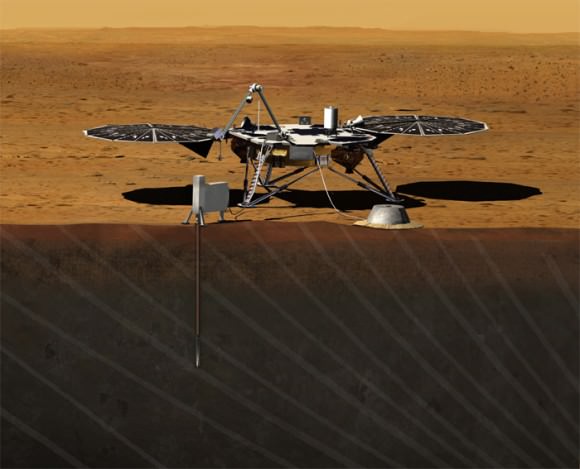
These finalists will receive $3 million in federal grants for detailed concept studies, and the mission (or missions) that are ultimately chosen will be launched by December 31st, 2021. The Discovery Program began back in 1992, and launched its first mission- the Mars Pathfinder – in 1996. Other Discovery missions include the NEAR Shoemaker probe that first orbited an asteroid, and the Stardust-NExT project, which returned samples of comet and interstellar dust to Earth.
NASA’s MESSENGER spacecraft, the planet-hunting Kepler telescope, and the Dawn spacecraft were also developed and launched under the Discovery program. The winning proposal of the Discovery Program’s 12th mission, which was issued back in 2010, was the InSight Mars lander. Set to launch in March of 2016, the lander will touch down on the red planet, deploy instruments to the planet’s interior, and measure its seismic activity.
NASA hopes to infuse the next mission with new technologies, offering up government-furnished equipment with incentives to sweeten the deal for each proposal. These include a supply of deep space optical communications system that are intended to test new high-speed data links with Earth. Science teams that choose to incorporate the laser telecom unit will be entitled to an extra $30 million above their $450 million cost cap.
If science teams wish to send entry probes into the atmospheres of Venus or Saturn, they will need a new type of heat shield. Hence, NASA’s solicitation includes a provision to furnish a newly-developed 3D-woven heat shield with a $10 million incentive. A deep space atomic clock is also available with a $5 million bonus, and NASA has offered to provide xenon ion thrusters and radioisotope heater units without incentives.
As with previous Discovery missions, NASA has stipulated that the mission must use solar power, limiting mission possibilities beyond Jupiter and Saturn. Other technologies may include the NEXT ion thruster and/or re-entry technology.


